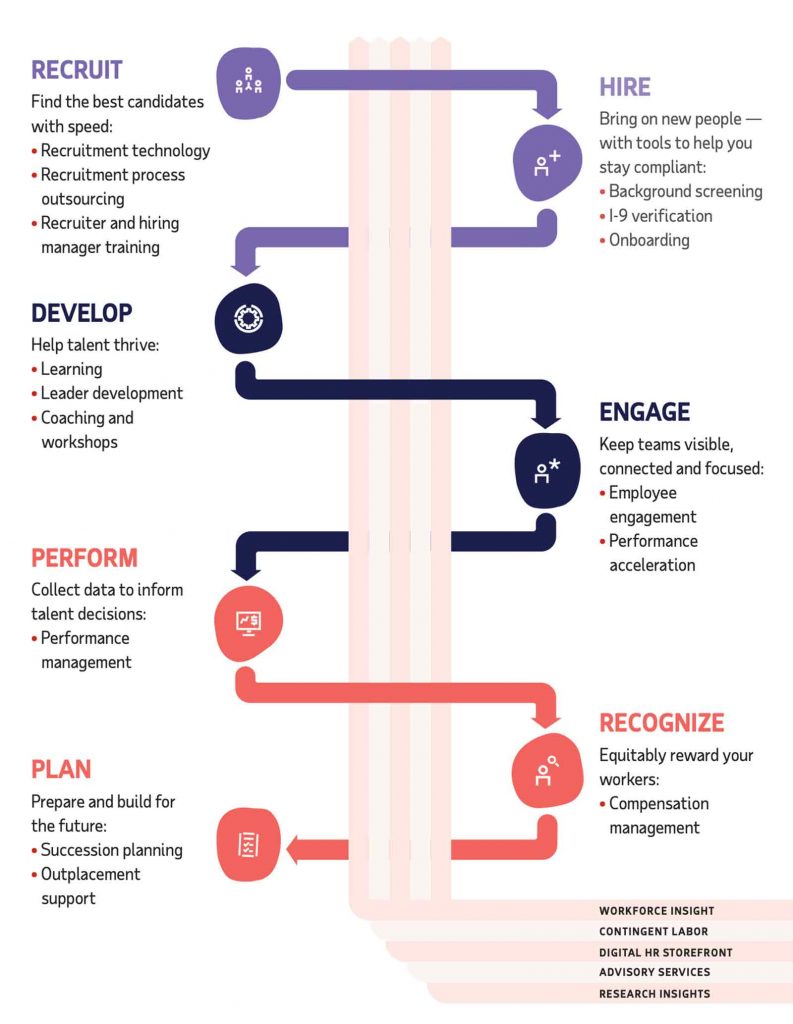Human intelligence has distinguished one group from another since the dawn of time. HR leaders will therefore need to rethink the workplace to lead enterprises into the future and emphasize HR technology to manage their mixed workforce, assure cooperation, create a strong culture, and facilitate pleasant employee experiences. As important as the overall flourishing of HR tech is, so is the Talent management facet of it.
Technology adoption in talent management within an organization
To manage cutting-edge technologies in IT, Telecom, Automation, Data Science, and ML/AI, there is an increasing need for new skill sets due to the rapid growth of technology and digitization in recent years. The expense of acquiring and keeping talent is rising as a result of the rising demand for particular abilities. For instance, if we don’t address the skills gap, we could lose $1.97 trillion in GDP growth from investments in cutting-edge technology over the next ten years, according to Accenture’s research on Fueling India’s Skill Revolution.
Through efficient learning and development (L&D) programs and the scalability of learning technology, organizations may address skill challenges. Learning could be made possible more rapidly, effectively, and affordably with the use of technologies like artificial intelligence, augmented reality, virtual reality, and blockchain.
Here are a few ways organizations can leverage technology for learning and skilling-
Mobile Learning: With the global workforce expected to be 75% millennials by 2025, Mobile learning offers a low-cost solution and provides easy access anytime-anywhere, and just in time.
Personalized Learning: Many organizations are adopting personalized learning as a preferred way to deliver training. Moreover, learning technology tools and Learning Management Systems (LMS) can use advanced technologies to assess and track individual learning patterns to tailor learning programs according to each person’s needs.
Gamification: Gamification is a great way to drive engagement in learning programs. One way is to introduce a leaderboard and game mechanics to reward learners with badges and points, making it a competitive learning and engagement tool.
Social Learning: Team collaboration is encouraged by social learning. Social learning tools like discussion boards are available on many learning platforms and are a terrific method to find organizational “experts” and work together to solve challenging problems. Social learning makes ensuring that knowledge sharing occurs across all teams, promoting a culture of ongoing learning.
A Complete Learning Ecosystem: An efficient LMS can provide a complete Learning Ecosystem and help employees throughout their organizational lifecycle. A learning ecosystem has many advantages, including-
- Integrating learning delivery processes and standardizing systems’ processes
- Facilitating knowledge collaboration, social learning, performance support, etc.
- Creating a unique and continuous learning environment.
- Enabling the L&D function to be Agile.
In today’s highly competitive corporate landscape, it has become increasingly difficult to analyze the value of learning technology. Thus, the ability to be flexible with the learning setup has become business-critical.
Ergonomic Evaluation in talent management
An Ergonomic Evaluation is an objective examination of the risk factors in your workplace that may cause musculoskeletal diseases or injuries in your employee. Ergonomic Assessments Ergonomic assessments are a scientific examination of how people work. The assessments can assist detect ergonomic concerns such as repetitive tasks that can create strains, inappropriate workspace setup, and improper tool use, all of which can lead to work-related musculoskeletal illnesses.
Ergonomics-based tools are delivering innovative risk management solutions to help combat and minimize risk for organizations, their employees, and those they are responsible for.
Examples of Ergo based tools that enable Talent management:
1. VelocityEHS: Ergonomics educates and empowers your employees while giving them all the tools they’ll need to maintain a healthy and productive lab environment.
2. ForgetMeNots: It provides two critical injury-prevention tools: awareness reminders and microbreaks. Users are reminded to be aware of their body and work routines through awareness reminders, which helps to ensure that an academic grasp of safety is translated into actual conduct at the computer. Microbreaks are short rests that can aid with weariness and circulation.
- The sit-stand tools- It reminds you when to sit and stand, teach you how to optimize the benefits of sit-stand workstations, and enhance ForgetMeNots to keep you aware of how you’re sitting & standing.
- Ergonomics-based tool- The notebook computer tools warn you if you need to switch to an external keyboard & mouse, remind you to do an ergo quick-check when you are in a new location, and add ForgetMeNots to keep you aware of how you’re using your notebook.
3. Velocity human tech tool: VelocityEHS Industrial Ergonomics is an ergonomics management system for industrial and non-office contexts. The organization will have all it needs to deploy, monitor, and manage the ergonomics process, from one to hundreds of locations, by combining interactive online training, AI-driven evaluation tools, expert-led site improvement events, and a robust management database.
While we talk about 360-degree development, employee well-being in post covid / recent times stands as the highest priority and more of an acknowledged call-out. Ergonomics-based assessments and evaluations using tools embedded in the devices and infra can be highly effective in making informed decisions and prioritizing employees’ well-being.
How an effective talent management process can improve productivity
To ensure that when an employee quits or joins a company, it has the least potential impact on their team, the talent management process inside the organization must be as efficient and frictionless as possible.
Starting with the hiring strategy, the talent management process can be made to be more productive. After all, you may streamline business processes with the fewest disturbances when you quickly make smarter personnel with significant potential. Use the most recent technical tools, such as an Application Tracking System (ATS) or an all-in-one Human Resource Management System, to expedite hiring while also selecting top personnel (HRMS).
Effective onboarding is equally crucial for raising organizational productivity. In fact, according to a report, when companies offer a seamless onboarding program to new hires, they can see a 54 percent increase in productivity.

Source: ADP: What is Talent Management?
Talent management of gig economy workers
The modern workplace values flexibility. People who work as independent contractors, part-time employees, and freelancers are leaving stable full-time jobs in search of greater flexibility and liberty from the 9 to 5 grind. Gen Z workforce seeks beyond loyalty for a company and remuneration from a company, hence it’s about touching human lives impactfully. Technology plays a crucial role in enabling it, owing to the numerous tools, concepts, and methodologies that we use today.
The gig economy began as a fad, but it is now established as a leading factor in the industry. According to a report, 41 million Americans worked as consultants, independent contractors, temporary employees, or on-call last year, contributing $1.28 trillion to the US economy. The HR challenges? Only full-time employees are served by the hiring and onboarding procedures in place today. To accommodate hiring and onboarding gig workers, human resource departments will need to modify their methods and adopt innovative techniques.
To sum up, all firms are considering talent management as the workforce becomes more globally connected, technologically advanced, and competitive. Monitoring what’s going on in the world will be essential as these changes take place during the upcoming decade. The top five trends in talent management as predicted in this article, although there will undoubtedly be more.





